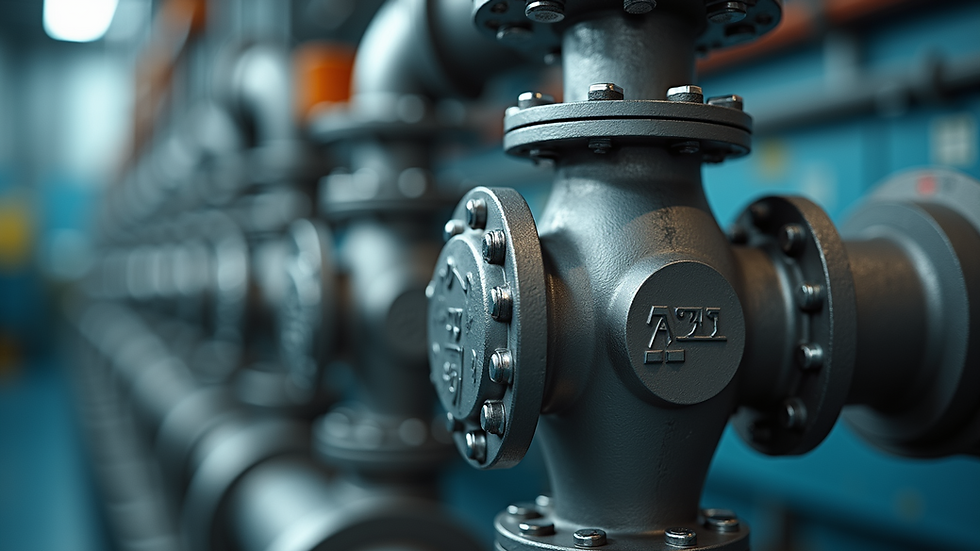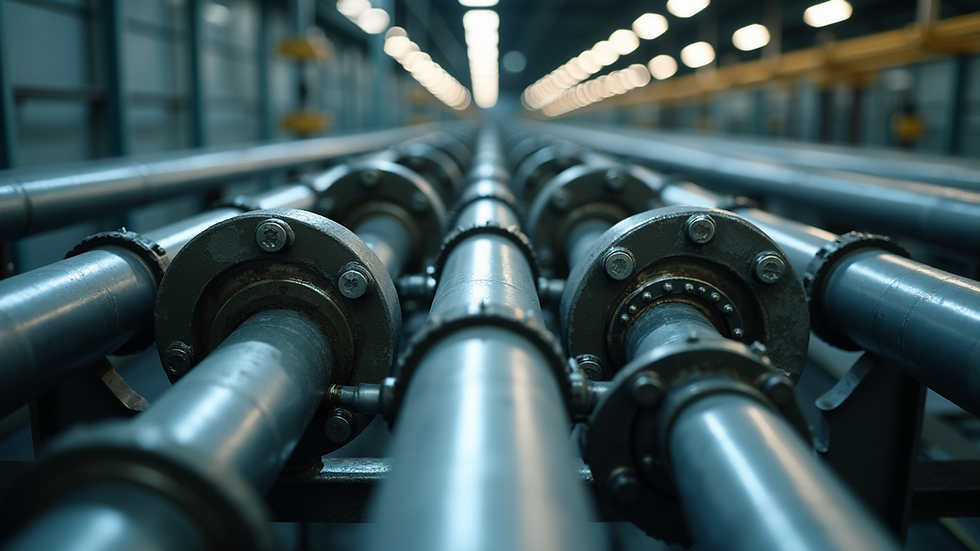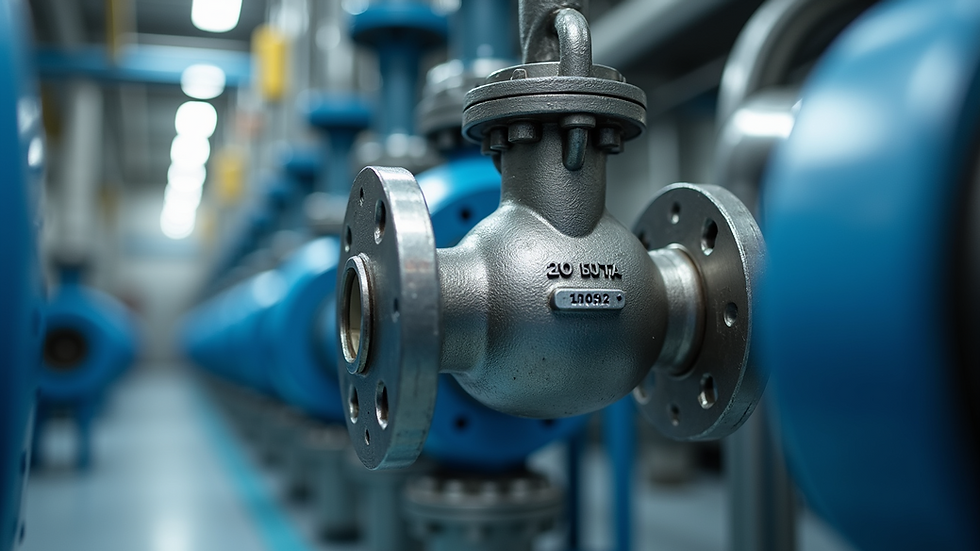Understanding the Key Features of Modern Valve Products
- Mark Richardson
- Jul 28
- 4 min read
Valves are essential components in many industrial and commercial systems. They control the flow of liquids, gases, and other materials, ensuring safety, efficiency, and reliability. Modern valve products have evolved significantly, incorporating advanced materials, designs, and technologies to meet the demands of various applications. This article explores the key features of modern valve products, providing practical insights and examples to help you understand their importance and functionality.
The Importance of Valve Products in Industrial Applications
Valve products play a critical role in industries such as oil and gas, water treatment, chemical processing, and manufacturing. They regulate flow, pressure, and temperature, protecting equipment and maintaining system integrity. Modern valves are designed to handle extreme conditions, including high pressure, corrosive substances, and fluctuating temperatures.
Some common types of valves include ball valves, gate valves, globe valves, and butterfly valves. Each type serves a specific purpose and offers unique advantages. For example, butterfly valves are known for their compact design and quick operation, making them ideal for large diameter pipes.
When selecting valve products, it is essential to consider factors such as material compatibility, pressure rating, and ease of maintenance. Choosing the right valve ensures optimal performance and reduces downtime.

Close-up view of a modern industrial valve with metallic finish
Key Features of Modern Valve Products
Modern valve products incorporate several features that enhance their performance and usability. Understanding these features can help you make informed decisions when selecting valves for your projects.
1. Advanced Materials
Modern valves are made from materials that offer high strength, corrosion resistance, and durability. Common materials include stainless steel, brass, bronze, and specialized alloys. These materials ensure valves can withstand harsh environments and extend their service life.
2. Precision Engineering
Valve components are manufactured with tight tolerances to ensure smooth operation and leak-free sealing. Precision engineering reduces wear and tear, improving reliability and reducing maintenance costs.
3. Enhanced Sealing Technologies
Sealing is crucial to prevent leaks and maintain system pressure. Modern valves use advanced sealing materials such as PTFE (polytetrafluoroethylene) and elastomers that provide excellent chemical resistance and flexibility.
4. Automation and Control Integration
Many modern valves are designed to integrate with automated control systems. Electric, pneumatic, or hydraulic actuators allow remote operation, improving safety and efficiency in complex systems.
5. Compact and Lightweight Designs
Innovations in design have led to more compact and lightweight valves without compromising strength. This makes installation easier and reduces the overall weight of piping systems.

Eye-level view of a valve actuator attached to a pipeline
Practical Applications and Examples of Valve Products
Valves are used in a wide range of applications, each requiring specific features to meet operational needs. Here are some examples illustrating how modern valve products are applied in different industries.
Water Treatment Plants
In water treatment, valves control the flow of water through filtration and chemical dosing systems. Butterfly valves are commonly used due to their quick operation and ability to handle large volumes. For instance, a 4 inch butterfly valve is ideal for controlling water flow in medium-sized pipelines, offering reliable shut-off and easy maintenance.
Chemical Processing
Chemical plants require valves that resist corrosion and can handle aggressive fluids. Valves made from stainless steel or special alloys with advanced sealing materials are preferred. Automated valves with remote control capabilities improve safety by minimizing manual intervention.
Oil and Gas Industry
Valves in the oil and gas sector must withstand high pressures and temperatures. Precision-engineered ball valves and gate valves are often used for their tight sealing and durability. Automation is also common to allow remote operation in hazardous environments.
HVAC Systems
Heating, ventilation, and air conditioning systems use valves to regulate the flow of water and refrigerants. Compact and lightweight valves simplify installation in tight spaces, while reliable sealing prevents leaks that could reduce system efficiency.

High angle view of industrial piping with multiple valves
Maintenance and Longevity of Modern Valve Products
Proper maintenance is essential to maximize the lifespan and performance of valve products. Modern valves are designed to be easier to maintain, but regular inspection and servicing remain crucial.
Routine Inspection
Check for signs of wear, corrosion, and leaks. Inspect seals and gaskets regularly and replace them if damaged. Automated valves should be tested for proper actuator function.
Cleaning and Lubrication
Keep valve components clean to prevent buildup that can impair operation. Lubricate moving parts as recommended by the manufacturer to reduce friction and wear.
Timely Repairs and Replacement
Address any issues promptly to avoid system failures. Replace worn or damaged parts with genuine components to maintain valve integrity.
Documentation and Records
Maintain detailed records of maintenance activities, including dates, findings, and actions taken. This helps track valve performance and plan future maintenance.
Future Trends in Valve Products
The valve industry continues to evolve with technological advancements and changing market demands. Some emerging trends include:
Smart Valves: Integration of sensors and IoT technology allows real-time monitoring of valve status, flow rates, and potential faults.
Sustainable Materials: Development of eco-friendly materials and coatings to reduce environmental impact.
Improved Automation: Enhanced control systems with AI and machine learning for predictive maintenance and optimized operation.
Modular Designs: Valves designed for easy customization and scalability to meet diverse application needs.
These trends promise to make valve products more efficient, reliable, and adaptable to future challenges.
Understanding the key features of modern valve products helps in selecting the right valves for your specific needs. Whether you require robust materials, precise engineering, or advanced automation, modern valves offer solutions that enhance system performance and safety. By considering practical applications and maintenance best practices, you can ensure your valve systems operate smoothly and efficiently for years to come.



Comments